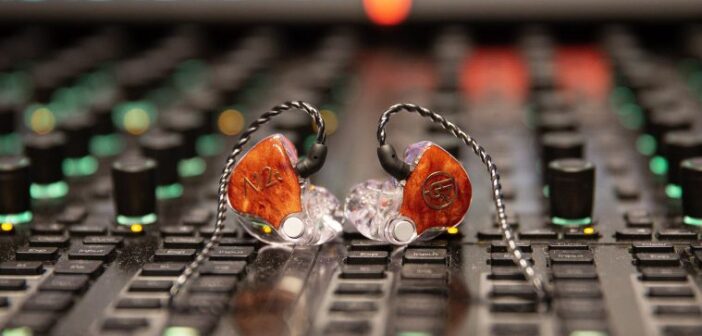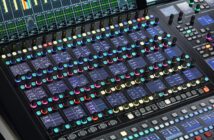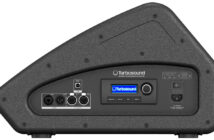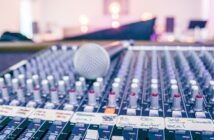In the music world, sound quality is paramount for both the audience and the artists. In-ear monitoring systems, commonly called IEMs (In-Ear Monitors), play a crucial role in musicians’ on-stage performance. This device, which fits in the ear, allows performers to listen to a personalized mix of their music while protecting them from sometimes unpleasant ambient noise. This article explores the different use cases for ear monitors to optimize the musical experience of singers and musicians, covering technical basics, IEM types, mixing techniques, and much more.
Introduction to ear monitors
In-ear monitors (IEMs) are designed to give musicians a reliable, personalized audio feed during their performances. These devices emerged in the 1980s, replacing traditional on-stage wedge monitors, which had several drawbacks, such as a high overall volume that could harm artists’ hearing. By using IEMs, performers benefit from clear sound while reducing the risk of hearing damage.
Functionality and working principle
IEMs generally operate via a wireless system composed of transmitters and receivers. Artists wear a receiver that picks up the audio mix sent by the sound engineer, allowing them to hear what they need without sound interference. IEMs are available in two main types: universal, which are designed to fit everyone, and custom-molded, which offer better acoustic isolation and increased comfort.
Advantages of IEMs for live performances
- Improved sound clarity
- Reduced sound pressure levels on stage
- Hearing protection for musicians
- Possibility of individual mixing based on each artist’s preferences
Practical tips
Before choosing your ear monitors, it’s crucial to test several models to identify the one that suits you best. Also consider consulting an audiologist for custom models that perfectly fit the shape of your ear.
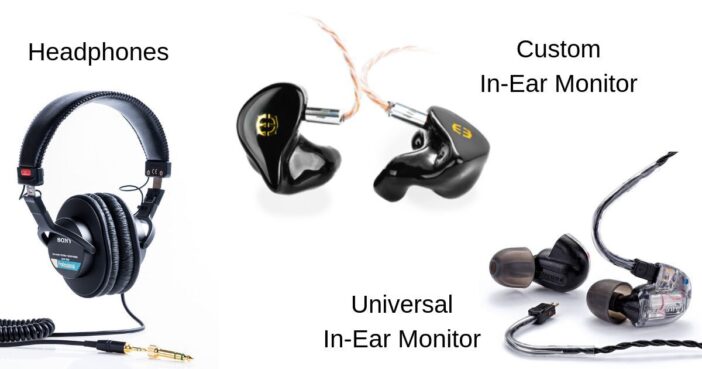
The different types of ear monitors
Categories of IEMs
There are two major categories of IEMs: universal models and custom-molded models. Each type offers distinct advantages depending on the artist’s specific needs.
Universal IEMs
Universal IEMs are designed to suit a wide range of users and often come with a set of foam or silicone tips for a comfortable fit. Although they are generally less expensive, their sound isolation capability can be limited if the size and shape don’t match perfectly.
Custom-molded IEMs
Custom-molded IEMs are made from impressions of the user’s ear. Although they are more expensive, their comfort and sound isolation make them a preferred choice for professional musicians. In addition, they can feature visual customization options, making them not only functional but also aesthetically pleasing.
Conclusion on the types: The choice between universal and custom IEMs depends on personal preferences, budget, and the required level of performance. Music professionals tend to favor custom-molded options to maximize comfort and sound experience.
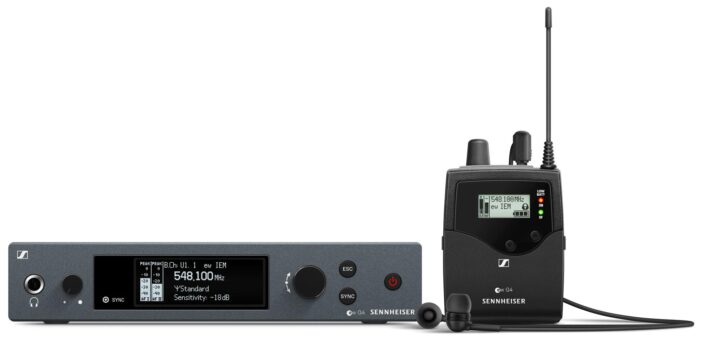
Wired or not?
Comparison of wired and wireless systems
Whatever the stylistic or practical choices, the choice between a wired and a wireless monitoring system determines how musicians will interact with their sound on stage. Each type has its pros and cons.
Advantages of wired systems
Wired systems are often simpler to set up and use, with no risk of interference or signal dropouts. They are also generally more affordable. However, artists’ mobility can suffer, limiting their ability to move around on stage, which can be a drawback during dynamic performances.
Advantages of wireless systems
Wireless systems allow for greater freedom of movement, essential for artists who want to roam the stage. Technological advances, notably UHF systems, now offer better sound quality and increased reliability. Nevertheless, they require special attention to battery checks and preventing frequency interference.
Selection tips
- Analyze the type of performance you’ll be giving (static vs. dynamic).
- Consider the environment in which you’ll be playing; some venues can cause signal interference.
In short, the choice between wired and wireless depends on individual performance needs and artists’ preferences.
Mixing techniques to optimize sound quality
Audio mixing: the key to live success
Audio mixing is a crucial aspect of ensuring a successful musical performance. Good mixing technique can be the difference between mediocre sound and an unforgettable experience for musicians and the audience.
Know your audio gear
Before starting the mix, it’s essential to get familiar with the audio gear used, including mixing consoles and recording software. Taking the time to experiment and learn the characteristics of each device can greatly influence the listening experience.
Creating a personalized mix
It is essential for each musician to have a personalized mix. This includes balancing the levels of each instrument or voice in the blend. Using processing tools such as equalizers and compressors helps sculpt the sound according to personal preferences. Experimentation is the mother of optimization.
Mixing tips
- Use mix groups for similar instruments.
- Run regular sound checks to adjust the mix.
- Don’t go too bright; overly treble-heavy sound can cause listening fatigue.
By applying solid mixing techniques, musicians can ensure their sound remains clean, clear, and pleasant, creating a better overall stage experience.
The importance of sonic ambience
Beyond the music itself, the acoustic environment plays a key role in the sound quality perceived by both the public and the artists. The correct use of IEMs can help manage this ambience while preserving the clarity of the mix.
Capturing the audience
Integrating the audience’s perception into the mix can enrich the stage experience. To do this, stage or ambient microphones can be used to capture the audience’s shouts or applause. This helps artists stay connected with the crowd, allowing them to feel the room’s energy.
Balancing ambient sound
It’s important to create a balance between direct sound and the sound coming from the environment. This can be done by adjusting the mix volume or using ambient microphones that capture the room sound naturally. When these settings are done well, musicians can avoid feeling hampered by overly isolated sound.
Conclusion on ambience mixing
In conclusion, paying close attention to ambience mixing can transform a performance, making it more dynamic and engaging. Used wisely, IEMs allow artists to experience a truly immersive stage environment.
To sum up, ear monitors are an essential asset for musicians who want to optimize their live sound experience. From solid technical basics to choosing between wired and wireless systems, and from optimizing the mix to managing ambience, every aspect plays a vital role in performance. By adopting best practices and avoiding common pitfalls, artists can maximize their on-stage potential. We encourage all musicians to explore IEMs to enrich their musical experience.
What are the advantages of ear monitors for singers?
Ear monitors provide better acoustic isolation, giving singers a clear listen to their voice without distractions, which improves their stage performance.
How do you choose between wired and wireless ear monitors?
The choice is based on the need for mobility: wireless models offer freedom of movement, while wired models are more reliable and often less expensive.
What are the best mixing techniques for ear monitors?
An effective mix for ear monitors should include personalized levels for each artist, the use of audio tools, and adjustments during rehearsals for optimal sound.
Can ear monitors cause hearing damage?
Yes, excessively high ear-monitor volume can lead to hearing damage, which is why it’s important to listen at safe levels to protect your hearing.
How do you optimize room ambience mixing using ear monitors?
For effective ambience mixing, it’s recommended to use ambient microphones to capture the audience while maintaining a balance between direct sound and the acoustic environment.

